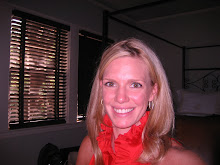Tuesday, September 29, 2009
Topic 8 - Instruction Technologies Continued
Topic 7 - Instructional Technologies
Wednesday, September 23, 2009
Topic 6 Spreadsheet
A spreadsheet is a program designed to organize and manipulate numerical data. The information is organized and stored in rows and columns where each position is called a cell. Formulas are used to calculate various data. It helps users manage numbers.
Benefits for teachers:
- Saves time
- Organizes displays of information
- Supports asking "what if" questions
- Increasing motivation to work with mathematics
As a teacher I have used spreadsheets quite a bit. I keep all of my students' grades in an Excel spreadsheet. I have it organized and formatted exactly the way I want it. I have it set up so that it automatically calculates averages for students as well as averages on how the class as a whole does on each assignment. This is helpful to see where my class is struggling and where we are mastering concepts. I also track our benchmark scores in Excel so that I can monitor the progress. My students also LOVE to use Excel. We use it when taking surveys and creating graphs.
Topic 5 Database
- Reducing data redundancy
- Saving time locating and/or updating information
- Allowing comparisons of information through searches across files
- Helping to reveal relationships among data
As a teacher, I have not personally created a database. That being said, I access our library database all of the time. It makes it EXTREMELY easy to locate books on certain subjects or by certain authors. I am very interested in learning how to use a database in my actual classroom, but I'm not yet sure how I would use one. If anyone has any good ideas for 3rd graders, I would love to hear them!
Google Earth Project
Sunday, September 20, 2009
Topic 3: Model Lessons
 Multiplication: Can You Show It?
Multiplication: Can You Show It? This is something I plan on trying with my students. I have done a similar lesson with my students drawing their pictures on paper. I think they will enjoy doing in on the computer!
I think this lesson has some potential, but as it is written it is a little weak. I think lots of technology could be incorpated in this lesson. I would have my students create their own fairytale. They could make story webs using Kidspiration to design the plot. They could also draw scenes using animation. They could either perform their play or it could be displayed on movie maker.
I have done a digital scavenger hunt with my kids, but I like the idea of creating a power point presentation. I think the students will enjoy showing their work to the class. I plan to use this lesson.
Topic 4 Word Processing
- Saves time - these documents make it very easy for teachers to modify existing materials instead of constantly creating new ones. It is also very east to make corrections.
- Enhances document appearance - the products produced by word processing look much more professional and polished than materials that are handwritten or typed.
- Allows sharing of documents - these documents make it very easy for teachers to share lesson plans. Students can also share ideas and products with each other.
Basic features include: storing for later use, storing in many formats, search and replace, move or copy text, and word wraparound.
Desktop publishing features include: alignment, changing appearance, insert headers/footers, insert colors, graphics, and text boxes.
Language features include: spell-check and grammar-check.
Web features include: inserting "live" URLs and Creating web pages.
Support features include: using templates, voice recognition, and merging text with data files.
As a teacher, I use existing word documents and create new documents every day. There are a plethora of uses for word documents in my classroom. I am in charge of planning math for my grade level. Each week, I type math plans on a word document and e-mail them to my coworkers. I am constantly typing handouts for parents and I print and e-mail them. Our spelling list is created on a word document and posted on my website. This has been especially helpful for my students in case they misplace their list. I have also created different research tools and fill-in-the-blank exercises for my kids to use when researching. I save these on the student public drive and they can access them on their own.
My students also love to create word documents. It makes their writing more novel to them. They think it is fun to publish their work and add pictures and colors. You would never think spelling sentences would be so fun, but my students love to create sentences and add pictures to them. Last year my students also created their own web pages. They had a portfolio of all the work they had created in class. They were able to link all of the documents they had created so they could look at their work anytime and anywhere using an Internet connection.
Word processing has so many benefits that it's hard to sum them all up. It is probably the most commonly used type of technology on our campus. Whether you are a young teacher or a veteran teacher....whether you are "tech savvy" or "tech illiterate" you have created and/or used a word document.
Tuesday, September 8, 2009
Technology Standards for Teachers
Monday, September 7, 2009
Atomic Learning
Technology Goals
- To have a better understanding of blogging so that I can learn how to effectively blog with my students
- To have a better understanding of Web 2.0 and learn new ways to communicate with other classrooms, speakers, etc.
- To learn how to podcast and how to use it in my classroom
- To understand how to use a wiki and when its appropriate use would be
- To utilize all of the technology my district currently has and learn new ways to implement technology



